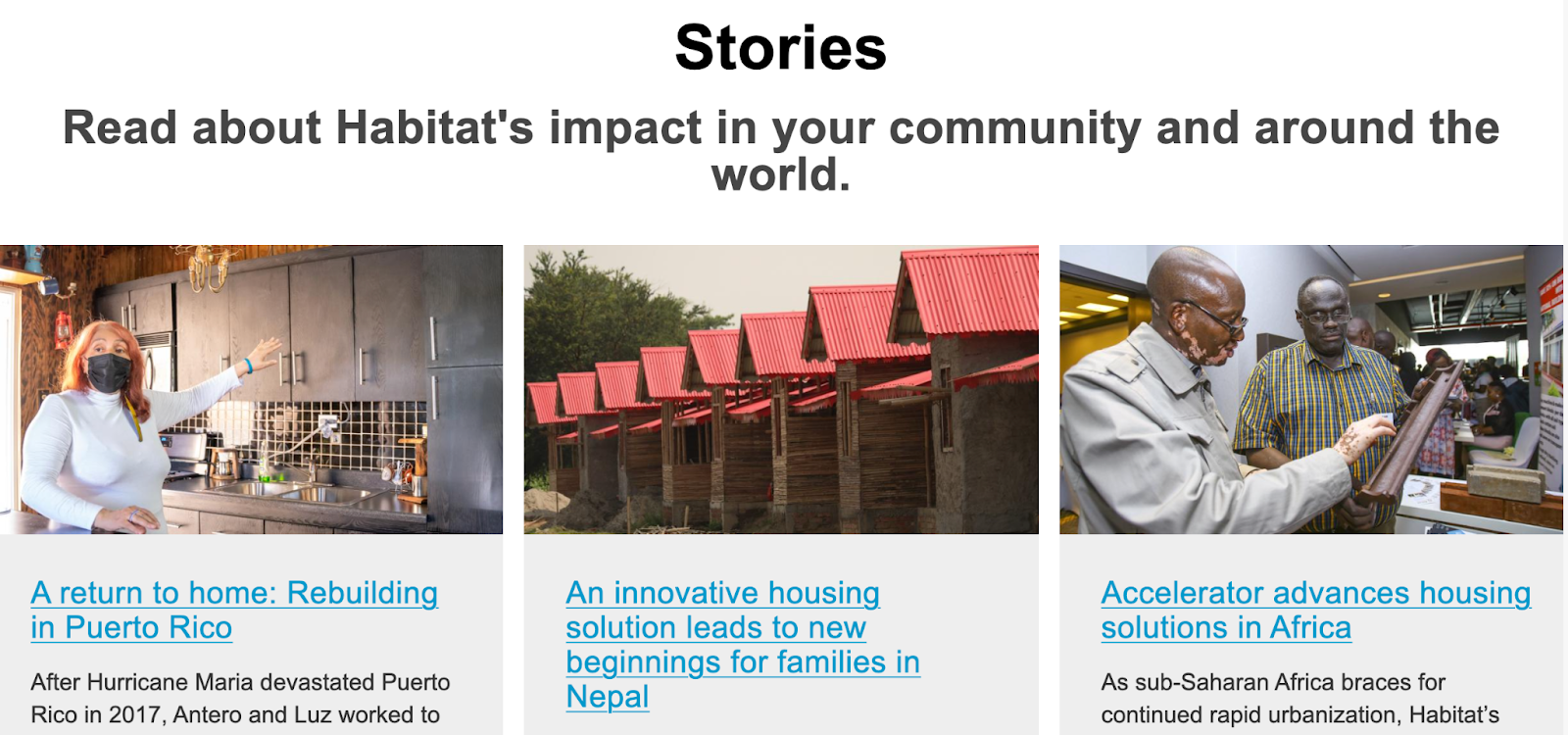How to Write a Short Story for Campaign Appeals

Request a Demo
Learn how top nonprofits use Classy to power their fundraising.
In nonprofit marketing, the term storytelling comes up often because we witness its impact in everyday examples, from entertainment to advertising. There’s no doubt stories are powerful tools.
Anytime you ask donors to give, stories can provide an emotional connection back to your cause. A good narrative then shows people the impact of their gift beyond raw numbers and facts.
Still, storytelling is easy to talk about, but harder to put into practice. To help your nonprofit organization get started, here are five tips for leveraging stories within your next appeal or fundraising campaign, along with several fundraising story examples from other nonprofits.
1. Focus on a Character
Every effective nonprofit story focuses on a real character—a person (or group) that gives your target audience a perspective to see the narrative through. Stories are meaningful because of the ability to connect us to someone relatable. Even though their experience isn’t ours, we can better understand them through empathy.
Your character doesn’t have to be someone your organization serves, either. It’s just as impactful to tell the story through the eyes of an employee, donor, volunteer, board member, or community partner. All these people need to do is act as a stand-in for your target audience and invite them into the narrative.
You also have access to characters even if your mission isn’t specifically human-focused. Nonprofits whose mission serves the environment or animal rights still have characters, too. That’s because these causes still affect and matter to humans, who then have a story to share.
Feeding America’s “Real Stories of Hunger” fundraising story example showcases the power of character. The organization tackles the challenge of hunger, a massive and complex issue, by showing it through the eyes of real people like Lamont or Brittany.

2. Build Tension and Resolve It
Every story your organization tells should involve conflict. Although conflict can make people uncomfortable, this tension gives purpose and meaning to a story. Large or small, these issues drive your narrative forward—after all, not including conflict means there’s no story to tell.
Think about a challenge your story’s character faces. Perhaps they noticed a social issue they want to help with or desire a sense of purpose for their life and resources. In either case, there was some conflict that compelled them to act.
This tension hooks the audience and holds their attention. However, they also want to see the tension resolved. Ideally, the character’s involvement within your organization is the solution they needed to overcome the challenge. Thus, your fundraising campaign should focus on a specific tension that people’s donations help to resolve.
The International Justice Mission (IJM) deals with modern slavery and human trafficking—a cause rife with tension—is a great example of how to build tension and resolve it. The nonprofit’s stories don’t shy away from this conflict, and viewers feel the emotional weight of what real people have experienced. Thankfully, IJM resolves the conflict by the end of each story and reminds the audience of the urgent need for continued support of other yet-to-be-told stories.

3. Use Strong Visuals
Compelling visual elements like photos and videos take your nonprofit’s storytelling to the next level. These visuals help your audience picture the character, their issue, and the action they took. In other words, a good image begins to tell the story all by itself.
However, capturing these visuals doesn’t happen by accident. Compiling and editing storytelling assets takes careful planning and execution. But armed with the right skills and equipment to take relevant photos and record videos of the story, your team can capture the story as it happens.
For your campaign appeal, gather specific images and videos around the character and theme you want to share. This means considering what visuals support the narrative and help drive your target audience toward a specific action. Then, unveil these images on each component of the campaign—from print mailers to website landing pages.
Charity: Water is a leading example of nonprofit fundraising stories with beautiful story visuals. The organization takes photos of every project it completes and displays them through stories on its website. Notice how these visuals highlight people and the emotions they experience while interacting with the organization’s mission.

4. Connect to a Clear Call to Action
Every good story contains a clear and compelling action step—the bridge that connects the narrative directly to your target audience. The benefit of being a nonprofit organization is the wide array of actions you can choose from, including:
- Making a donation
- Attending a fundraising event
- Volunteering their time
- Becoming a sponsor
- Giving a recurring gift
- Donating in-kind items
Equally important, and although it might be tempting to squeeze more than one action in, try to stick to one action in your fundraising campaign. By focusing each story on only one next step, you avoid confusing the audience—and the more action options you include, the less likely anyone is to take any action.
The Rainforest Alliance’s Follow the Frog campaign is an outstanding story example with an unmistakable call to action. By boiling down to a single step—buy products certified as rainforest safe—the organization meets the challenges of saving the rainforest. This simple action has led to plenty of stories for the nonprofit.

5. Show Transformation
Stories have power because of the ability to demonstrate a character’s change from beginning to end. This shows how stories can be dynamic and serve to inspire change in your target audience. After all, every person craves a transformation for the better, and stories show how that change is possible.
Consider how your nonprofit helps people—not just those you serve, but also donors, volunteers, and community partners. How are they better through their connection to your mission? That’s the question your audience will ask, too, so use a story to provide examples they can relate to and inspire them to act.
Habitat for Humanity and organizations like it tell transformative fundraising stories because there’s a clear before and after. Picture this: a character who previously didn’t have a home receives one, and as a result, their life is better. However, the story doesn’t end there. The process of providing housing also touches everyone else involved, too.

How Will You Add Stories to Your Next Campaign?
Intentional storytelling is a powerful practice to add to your nonprofit’s marketing campaigns. By focusing on a character and their conflict, adding visuals and clear action, and showcasing transformation, you can make any story more impactful.
However, don’t stop there. There are countless other examples of nonprofit fundraising stories told every day. Learn from how these organizations implement stories to promote the nonprofit’s mission. After all, following other stories helps us capture successful storytelling within our nonprofits better.

Tell Your Story on LinkedIn
Subscribe to the Classy Blog
Get the latest fundraising tips, trends, and ideas in your inbox.
Thank you for subscribing
You signed up for emails from Classy
Request a Demo
Learn how top nonprofits use Classy to power their fundraising.
 Explore Classy.org
Explore Classy.org 

